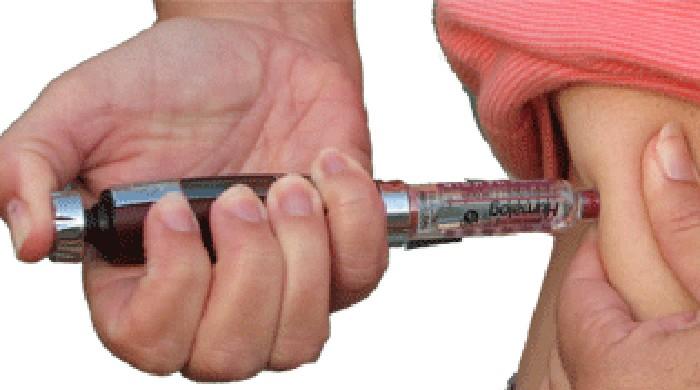With same training, insulin pumps no better than injections
Pumps also have a technological advantage that wasn't addressed in the study
April 06, 2017

Adults with type 1 diabetes may be able to manage their blood sugar levels just as well with multiple daily insulin injections as they can with continuous insulin pumps, a recent study suggests.
In type 1 diabetes, a lifelong condition, the pancreas produces little or no insulin, a hormone needed to allow blood sugar to enter cells and produce energy. People with the condition usually have to test their own blood sugar level throughout the day and inject insulin to manage it; otherwise they risk complications like heart disease and kidney damage.
Some previous research has suggested pumps may help patients get better blood sugar control than they can achieve by giving themselves multiple daily insulin injections. But patients tend to get more intensive training on managing their blood sugar with pumps than they do with injections, so some doctors have questioned whether better patient education might be the reason pumps get better results.
For the current study, researchers set out to answer this question. They offered 260 adults with type 1 diabetes the same education on how to manage their blood sugar, also known as blood glucose, and then randomly assigned participants to use pumps or daily injections.
"What the trial shows fairly unequivocally is that education/training can produce considerable benefit, although it leaves many patients still a long way from current glucose targets," said lead study investigator Dr Simon Heller, a diabetes researcher at the University of Sheffield in the UK.
To compare pumps to injections, researchers examined average blood sugar levels over the course of several months by measuring changes to the haemoglobin molecule in red blood cells. The haemoglobin A1c test measures the percentage of haemoglobin that is coated with sugar, with readings of 6.5 percent or above signalling diabetes.
At the start of the study, participants had average A1c readings of 9.1 percent, indicating poorly controlled blood sugar with an increased risk of serious complications.
After two years of follow-up, most patients still had poorly controlled blood sugar. People using the pumps achieved average A1c reductions of 0.85 percentage points, compared with 0.42 percentage points with multiple daily injections, researchers report in the BMJ.
Once researchers accounted for other factors that can influence blood sugar such as age, sex and treatment center, the difference in A1c for pump versus injection patients was too small to rule out the possibility that it was due to chance.
There are many different types of pumps and injection devices on the market, and one limitation of the study is that researchers didn't examine how specific design features might influence how well patients succeeded in managing their blood sugar, the authors note.
It's also possible that the effort to give pump and injection patients the same level of education may have skewed the results because in real life, patients might get more education when they start using pumps than they would for injections, said Dr. Roman Hovorka, director of research at the University of Cambridge Metabolic Research Laboratories in the UK.
Pumps also have a technological advantage that wasn't addressed in the study, Hovorka, who wasn't involved in the research, said by email. These devices can collect data on insulin delivery and blood sugar levels and transmit that information to clinicians, enabling doctors to adjust treatment based on the results.
But because pumps are much more expensive than injections, it doesn't make sense to use them unless they have a proven advantage for blood sugar control, said Dr Edwin Gale, emeritus professor of diabetes at the University of Bristol in the UK.
In the UK, pumps cost about 2,500 pounds ($3,116.25) a year plus an additional 1,500 pounds ($1,869.75) for batteries and other supplies, researchers note.
"I think the take-home message for patients is that pumps won't do the job for you," Gale said by email. "They are not for everyone, and many people can do just as well on multiple injections."











